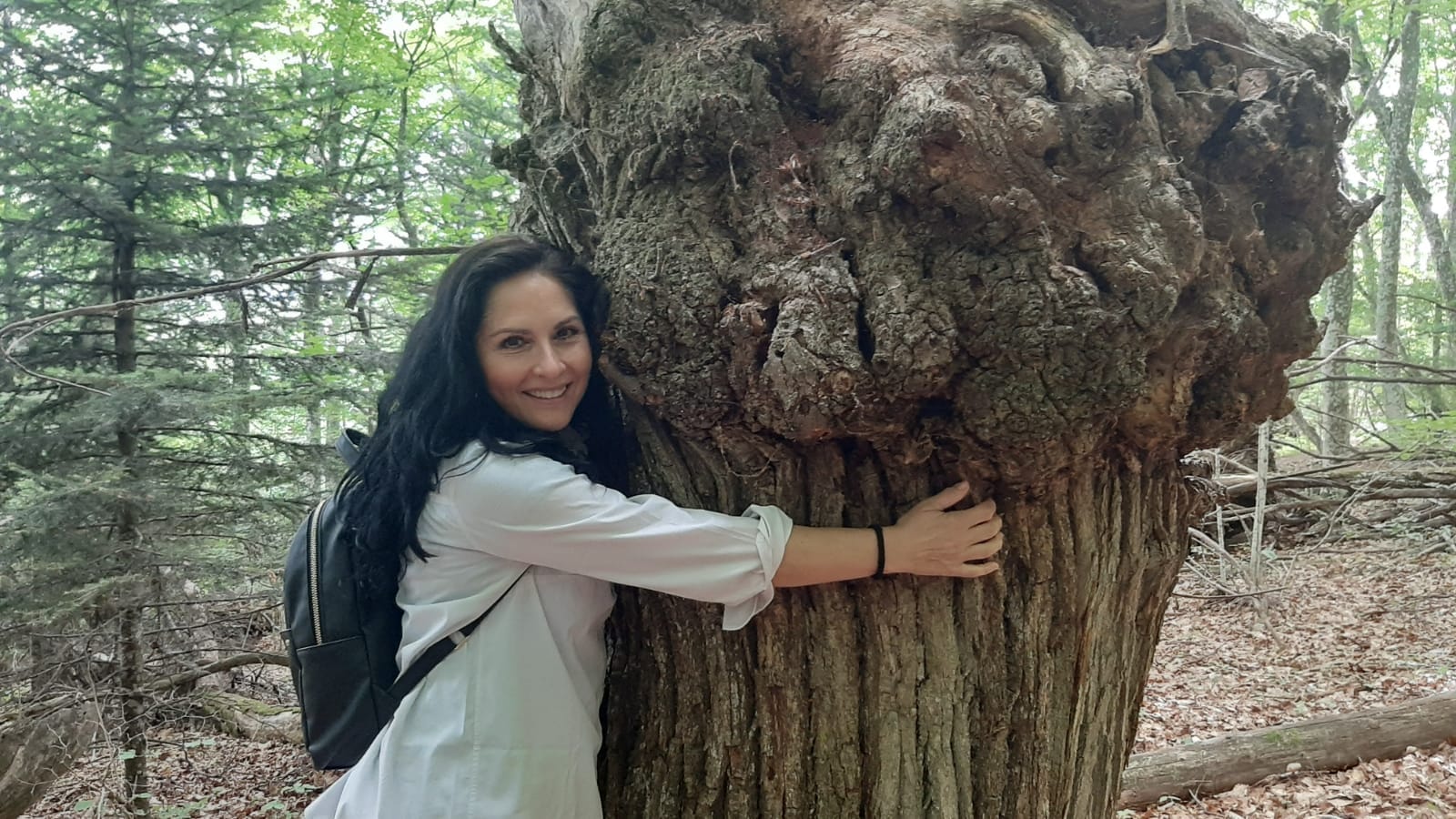Terpenes are biomolecules made up of multiples of the isoprene unit, obtained in biological systems from the reaction of several units of IPP (isopentenyl pyrophosphate) and DMAPP (dimethylallyl pyrophosphate). They can be of linear, cyclic or mixed linear and cyclic structure. When terpenes are modified with reactions that lead to the formation of functional groups that contain atoms that are different from carbon, such as hydroxyl, carbonyl or nitrogen-containing groups, they are called terpenoids. They are produced by many plants, especially conifers and some insects and are the main components of resins and essential oils of plants, mixtures of all those substances that give each flower or plant a characteristic odor or aroma every day. They also represent the biosynthetic precursors of steroids and carotenoids. Many flavors used in foods or perfumes are derived from natural terpenes or terpenoids.

FOREST BATHING
Literally it means Forest Bath and is a real therapeutic practice born over 40 years ago in Japan with the name of Shinrin Yoku. The practice spread first in the Eastern world (Thailand, Korea) and then gradually in the United States and Europe, especially in Germany. Now even in Italy this practice is beginning to be very well known. Several studies in the West as well as in the East have shown how certain substances released by trees impact our immune system. Thus the role of monoterpenes was discovered, elements of the plant that also make up essential oils. These studies have also highlighted the direct role that these substances have on our NK (Natural Killer) cells, that is, those white blood cells responsible for controlling viruses and cancer cells. Beneficial effects on the cardiovascular system, blood pressure, stress hormone and the immune system in general have also been demonstrated.


Terpinolene: releases a fresh aroma, it can in fact be found in the tea tree as well as in nutmeg, and its beneficial properties have the heart as the main recipient. It is an excellent antimicrobial, especially against some bacteria such as Bacillus subtilis, Staphylococcus aureus, Staphylococcus epidermidis and Escherichia coli. After extracting terpinolene essential oil from the leaves, roots and seeds of the plant, it was understood that the best concentrate comes from the leaves. It has also been found to be a perfect fungicide against Propionibacterium, a type of bacteria that has the job of causing acne. Like many other terpenes, it has proven effective as a natural antiseptic, its application helps to heal certain shallow wounds by preventing them from becoming inflamed and infected. Terpinolene has shown antioxidant and anticarcinogenic properties. It also has antioxidant properties and protects DNA from damage, with an effect on human lymphocytes, a subtype of our white blood cells. After exposing these cells to terpinolene for periods of 24 and 48 hours, keeping the total oxidative decrease constant, an increase in the antioxidant capacity in the lymphocytes was discovered. Recently, other studies have confirmed the anticarcinogenic properties of this terpene, which slows down or even blocks the growth of malignant cells. A 2012 research concluded that with sage and rosemary (rich in terpinolene) it is possible to inhibit the protein that has the task of making cancer cells proliferate in the body. Terpinolene thus prevents the growth of cancer cells and when already present, slows down their reproduction. Recent studies have also confirmed its potential in preventing cardiovascular disease. In this case, terpinolene could be used to fight the oxidation of low-intensity lipoproteins, responsible for causing bad cholesterol. The accumulation of this type of cholesterol in our arteries can lead to cardiovascular problems.

Karyophyllene: this molecule produces a very strong and spicy aroma, it is found not only in cannabis but also in other plants such as pepper and cloves, it binds with the CB2 receptor present in the endocannabinoid system of the nervous system and for this reason it is found often referred to as a cannabinoid

Limonene: thanks to the etymology of its name it is easy to understand where this terpene can be found. It is in fact present in citrus fruits, ginger and also in the cannabis plant.

Myrcene: also called β-myrcene is an acyclic monoterpene commonly found in nature, together with other terpenes, in the essential oil of various plants, including: lemongrass (Cymbopogon citratus), hops (Humulus lupus, where it contributes to balsamic aroma of beer), verbena (Verbena Officinalis), mango (Mangifera Indica), thyme (Thymus Vulgaris), laurel (Laurus Nobilis) and Cannabis Sativa. It has a delicate scent and remarkable properties. In the cannabis plant, β-myrcene can represent up to 50% of the total terpenes and, among other things, helps to generate the characteristic smell of cannabis (and of the other species in which it is present). Its fragrance is very particular, it recalls the smell of earth and musk, with spicy and balsamic notes. Myrcene is a very volatile compound and this nature makes it somewhat difficult to use as such. It is widely used in the perfume industry, for the production of terpene fragrances.

Pinene: present in various plants such as Pine (from which it takes its name), Fir, Artemisia, Sage, Rosemary, Tea Tree, Eucalyptus, Cannabis Sativa L. (in this the latter is found mainly in the a-pinene isomer structure). It is also contained in Parsley and Basil.


